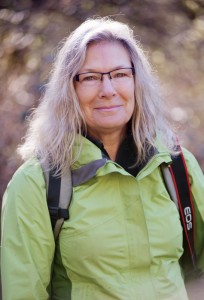Residents of Victoria are all too familiar with The Butchart Gardens. It’s one of our more well-known claims to fame; it’s also widely known that beneath the beautiful and blossoming landscape lies a historic tale, although the details of the tale are unknown to many.
This uncertainty is precisely what prompted University of Victoria professor and artist Gwen Curry to write her first book, Tod Inlet: A Healing Place.
“With writing there has to be passion, and I was passionate about this story,” says Curry.

The area where the gardens stand is Tod Inlet, which is Brentwood Bay’s corner of Gowlland Tod Provincial Park.
Curry’s relationship with the inlet began nearly 40 years ago. Back then it was simply a place to wander and be alone with nature.While getting her Fine Arts degree at UVic, Curry was captivated by the inlet and its underlying stories.
“Back then, it was untouched,” she says. “It wasn’t yet a park. No barriers, no fencing… just the debris from the factory.”
The factory Curry refers to is a cement plant that operated at Tod Inlet until 1921 and was the first of its kind to be completed in Western Canada.
“It’s a part of our local history,” she says. “We all knew about the old factory.”
Through neighbours, friends, and family, the story began to present itself to Curry in pieces. Over time, she found that the people she met while walking the inlet had questions, and she often had the answers.
“Without trying at all, I had more knowledge than most,” she explains, recalling how the book came to be.
After an inspiring trip to the Northwest Territories in 2005, Curry decided to trade in the paintbrush for a camera, and the inlet became the perfect muse. At first, photography was a personal endeavour for Curry, and she found herself taking pictures of the inlet.
“I loved the juxtaposition of the man-made and the natural,” she says.
Over the years, Curry took almost 7,000 photographs of Tod Inlet. When the idea for a book surfaced, she found that she had amassed a lot of knowledge about the area.
“I sure didn’t feel like an elder, but in a way I was,” she says. “I knew so much, I realized, ‘I have to write this story.’ It’s not just a place for us to go to for healing; it’s a place that is healing itself.”
